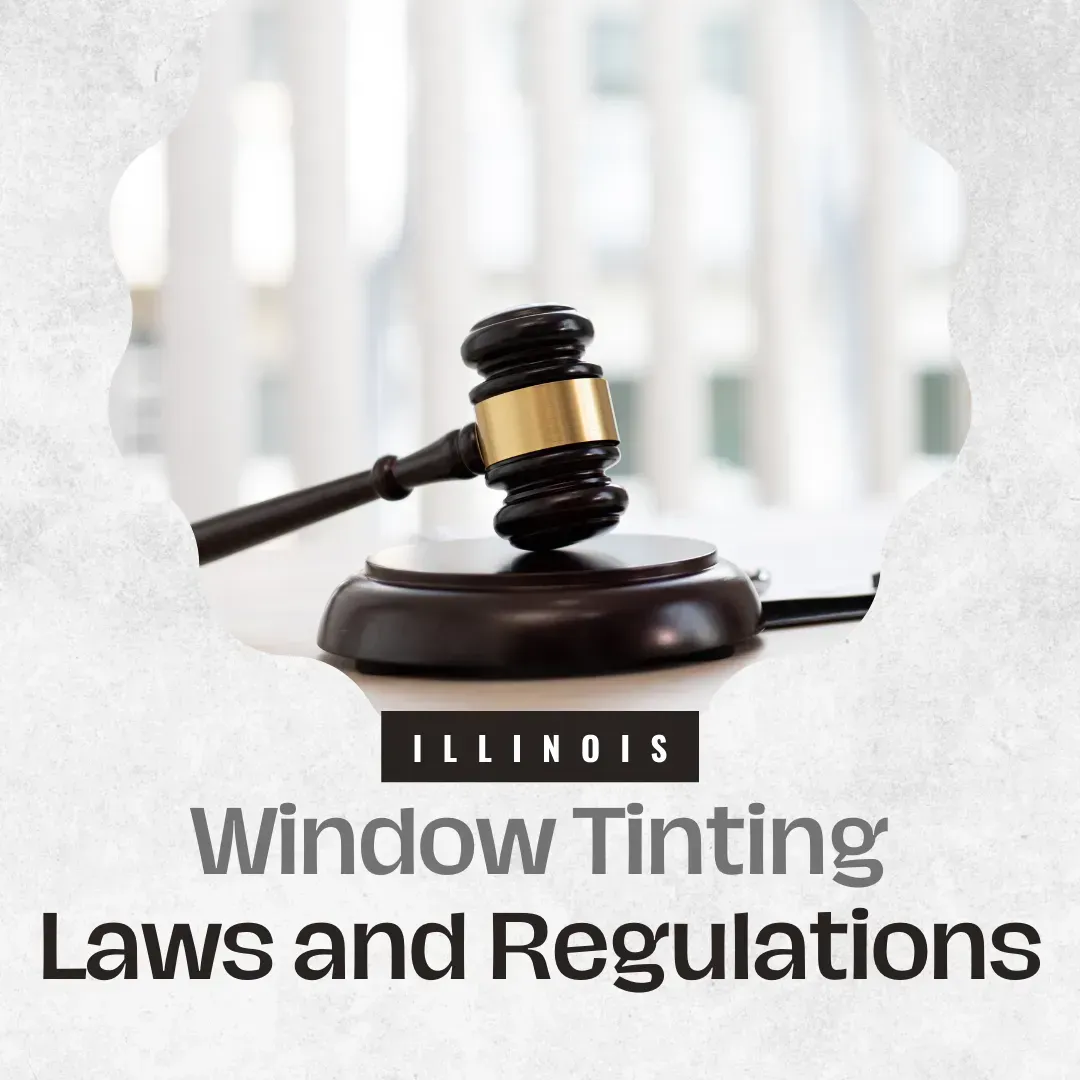
Blogs
Window Tinting Insights: Expert Tips, Trends, and Solutions
Discover the Latest in Window Film Technology and Applications

What are the Illinois window Tinting Laws and Regulations?
If you are thinking about tinting your car windows in Illinois, you need to be aware of the laws and regulations that apply to this modification. Illinois tint laws are slightly more complex than most states, and they vary depending on the type of vehicle and the window location. In this blog post, we will explain the basics of Illinois tinting laws and regulations, and how to avoid penalties and fines for illegal tinting.
Window tinting is the process of applying a film or coating to the glass of a car window to reduce the amount of visible light that passes through it. Window tinting can have several benefits, such as:
- Enhancing the appearance and privacy of your vehicle
- Reducing glare and heat from the sun
- Protecting your eyes and skin from harmful UV rays
- Improving security by making it harder to see inside your vehicle
However, window tinting can also have some drawbacks, such as:
- Reducing visibility for the driver and other road users
- Interfering with electronic devices and signals
- Violating state laws and regulations if not done properly
What are the Illinois tint laws and regulations?
Illinois window tinting laws were enacted in 2009, and they are based on the percentage of visible light transmission (VLT) that is allowed through the window. VLT is the amount of light that can pass through a window, measured in percentage. The lower the VLT, the darker the tint. Illinois tint laws differ for sedans (passenger vehicles) and SUVs or vans (multipurpose vehicles). Here is a summary of the Illinois tint laws for each type of vehicle:
Sedans:
Windshield: Non-reflective tint is allowed on the top 6 inches of the windshield
Front side windows: Must allow more than 35% of light in
Back side windows: Must allow more than 35% of light in
Rear window: Must allow more than 35% of light in
SUVs or vans:
Windshield: Non-reflective tint is allowed on the top 6 inches of the windshield
Front side windows: Must allow more than 50% of light in
Back side windows: Any darkness can be used
Rear window: Any darkness can be used
There are some additional rules and exceptions for Illinois tint laws, such as:
You can install 35% VLT on all windows (except windshield) if none of the windows behind the driver’s seat are tinted below 30% VLT
You can install 50% VLT on front side windows if none of the windows behind the driver’s seat are tinted below 35% VLT
You can install any darkness on back side windows and rear window if front side windows have at least 50% VLT
You cannot use reflective tints on any window, except for non-reflective tints on the top 6 inches of the windshield
You cannot use any colors of tints that are explicitly banned by Illinois law
You must have dual side mirrors if your back window is tinted
You must have a certificate or sticker to identify legal tinting if required by law
You must have a medical exemption for special tint if you have a condition that requires it
What are the penalties and fines for illegal tinting in Illinois?
If you violate the Illinois tint laws and regulations, you may face penalties and fines depending on the severity of your offense. According to Illinois law, illegal tinting is a petty offense with a $50-$500 fine for first-time offenders. Second or subsequent violations are class C misdemeanors with a $100-$500 fine. Additionally, you may be required to remove or alter your illegal tint to make your vehicle comply with the law. You may also face other consequences, such as increased insurance rates, reduced resale value, or safety hazards.
How to avoid illegal tinting in Illinois?
The best way to avoid illegal tinting in Illinois is to follow the state laws and regulations when applying or installing window tints on your vehicle. You should also consult with a professional window tinting service that can provide you with quality products and services that meet the legal standards. You should also check your vehicle’s factory-installed window tints, as they may not comply with Illinois law. You should also be aware of any changes or updates to Illinois tint laws, as they may affect your current or future window tints.
Conclusion
Window tinting can be a great way to enhance your vehicle’s appearance, privacy, security, and comfort. However, you need to be careful about complying with Illinois tint laws and regulations when modifying your vehicle’s windows. By following this guide, you can avoid penalties and fines for illegal tinting, and enjoy the benefits of window tinting safely and legally.
References:
Our Services
Full Vehicle Tint
Rear Half Tint
Front Half Tint
Windshield Sunstrip/Brow
Headlight Tint
Taillight Tint
Our Services
Full Vehicle Tint
Rear Half Tint
Front Half Tint
Windshield Sunstrip/Brow
Headlight Tint
Taillight Tint
Operating Hours
Monday - Saturday 8 am to 6 pm. Sunday closed
Socials
Working Hours
Monday - Saturday 8 am to 6 pm. Sunday closed
© Copyright 2024. All Right Reserved.

